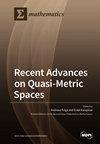量子强化学习的脑启发代理
IF 2.3
3区 数学
Q1 MATHEMATICS
引用次数: 0
摘要
近年来,脑科学和神经科学的进步极大地影响了计算机科学领域,尤其是强化学习(RL)领域。研究人员从神经生物学和神经心理学中汲取灵感,利用这些发现开发出了新的机制,用于理解大脑中的智能决策过程。与此同时,量子计算的出现开辟了人工智能的新领域,促进了量子机器学习(QML)的发展。本研究介绍了一种新型模型,该模型集成了量子尖峰神经网络(QSNN)和量子长短期记忆(QLSTM)架构,其灵感来源于人类大脑的复杂工作原理。我们的方法专门针对高能效环境中的强化学习任务而设计,它经历了两个不同的阶段,反映了感官和记忆系统。在初始阶段,类似于大脑的下丘脑,提取低级信息来模拟感官数据处理模式。随后,在类似海马体的更高层次上处理这些信息,捕捉并记忆相关模式。我们将我们的模型与现有的量子模型(包括量子神经网络(QNN)、QLSTM、QSNN 及其经典模型)进行了对比分析,阐明了它的独特贡献。通过实证结果,我们证明了利用受大脑启发的量子模型的有效性,该模型在优化能源使用情况方面优于经典方法和其他量子模型。特别是在平均、最佳和最差总奖励、测试奖励、鲁棒性和学习曲线方面。本文章由计算机程序翻译,如有差异,请以英文原文为准。
Brain-Inspired Agents for Quantum Reinforcement Learning
In recent years, advancements in brain science and neuroscience have significantly influenced the field of computer science, particularly in the domain of reinforcement learning (RL). Drawing insights from neurobiology and neuropsychology, researchers have leveraged these findings to develop novel mechanisms for understanding intelligent decision-making processes in the brain. Concurrently, the emergence of quantum computing has opened new frontiers in artificial intelligence, leading to the development of quantum machine learning (QML). This study introduces a novel model that integrates quantum spiking neural networks (QSNN) and quantum long short-term memory (QLSTM) architectures, inspired by the complex workings of the human brain. Specifically designed for reinforcement learning tasks in energy-efficient environments, our approach progresses through two distinct stages mirroring sensory and memory systems. In the initial stage, analogous to the brain’s hypothalamus, low-level information is extracted to emulate sensory data processing patterns. Subsequently, resembling the hippocampus, this information is processed at a higher level, capturing and memorizing correlated patterns. We conducted a comparative analysis of our model against existing quantum models, including quantum neural networks (QNNs), QLSTM, QSNN and their classical counterparts, elucidating its unique contributions. Through empirical results, we demonstrated the effectiveness of utilizing quantum models inspired by the brain, which outperform the classical approaches and other quantum models in optimizing energy use case. Specifically, in terms of average, best and worst total reward, test reward, robustness, and learning curve.
求助全文
通过发布文献求助,成功后即可免费获取论文全文。
去求助
来源期刊

Mathematics
Mathematics-General Mathematics
CiteScore
4.00
自引率
16.70%
发文量
4032
审稿时长
21.9 days
期刊介绍:
Mathematics (ISSN 2227-7390) is an international, open access journal which provides an advanced forum for studies related to mathematical sciences. It devotes exclusively to the publication of high-quality reviews, regular research papers and short communications in all areas of pure and applied mathematics. Mathematics also publishes timely and thorough survey articles on current trends, new theoretical techniques, novel ideas and new mathematical tools in different branches of mathematics.
 求助内容:
求助内容: 应助结果提醒方式:
应助结果提醒方式:


